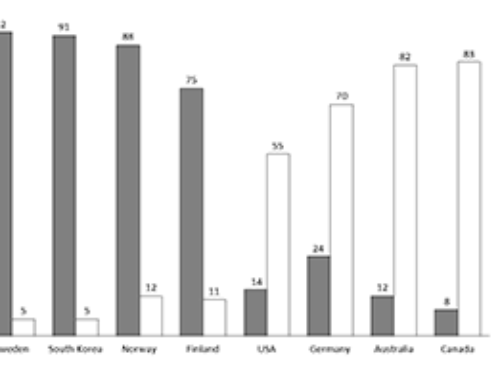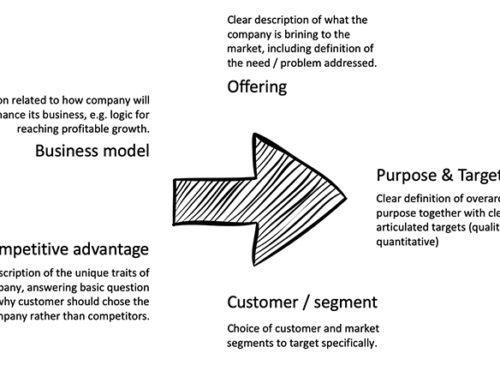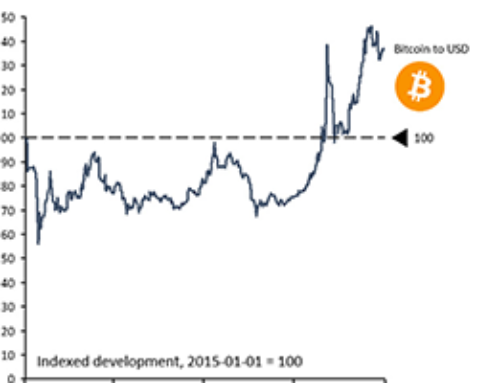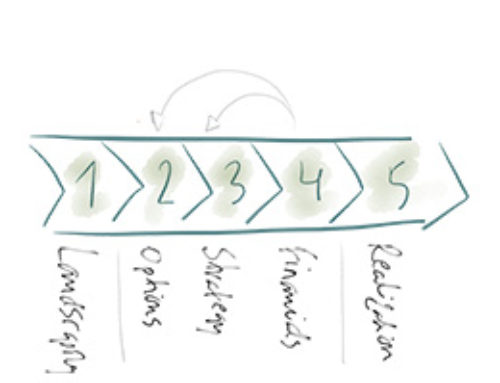Business planning is a core activity for any professionally run business. If handled well, it should result in a comprehensive business plan that enables the company to operate both efficiently and effectively. However, it is important to realize how the business plan in any company should relate to the overarching strategy. In this Insight on Strategy, we will share our perspective on how to conduct business planning effectively and how your business plan should relate to your chosen strategy.
Business plan is not strategy
A common misunderstanding is that a business plan is the same as the strategy. The business plan should carry aspects and key themes from your strategy, but it will need to capture additional dimensions as well. A business strategy, on the other hand, should focus clearly on the four key areas that we have discussed in previous insights: offerings (what you bring to the market), segments (to whom are you bringing the offering), competitive advantage (why should the customer want to buy your products and services), and business model (how you plan to earn money). Without a clear view on what you are selling, to whom you are selling it, why the customer should buy it, and how you will earn your money, there is no point in making a business plan around it. In such a case, we suggest revisiting the strategy development effort in order to clarify the strategy first. The key objective of the business plan is to create basic prerequisites for realizing the strategy – assuming there is a defined strategy to start with.
Apart from the content, the strategy differs from the business plan in terms of the time horizon. As discussed in previous insights, a business strategy should be valid in today’s business environment and be sustainable over some period of time. In practical terms, this means that your business strategy must be valid today and three to five years into the future. With regard to the business plan, however, the time-frame could be much more narrow; in normal circumstances we would recommend basing the business plan in the zero-to-two-year range, typically overlapping with your budgeting period. In practical terms, this means that the business plan should reflect the part of your business strategy that lies in the 0-2-year horizon, while other parts – those that require realization beyond the two-year horizon – might be excluded.
A business plan should be a comprehensive and well-structured document
Companies that consider business planning to be one of their core activities typically end up with a comprehensive and well-structured business plan that captures all of the key business aspects that need to be in focus for the next two years. This document, along with the process that goes in to its creation, is crucial for bringing the organization together around, say, its key objectives. It also keeps the management and the rest of the organization focused and is one of the key tools needed when realizing a strategy.
The actual form and structure of a business plan will need to be adapted to the needs of the specific company. Based on our experience, we have been able to structure a generic business plan template that is a typical starting point for any engagement that involves a business planning activity. We usually structure a business plan in the four following layers.
Layer 1 represents the executive brief and, as such, does not represent any new information, but rather provides a good summary of all the key points in the business plan. Layer 2 describes the background that should be seen as the context of the business plan. The third layer represents the actual plan and the fourth layer contains perspectives on how the plan should be realized.

Layer 1: Executive summary
Since the business plan will be a comprehensive document that covers a wide range of topics, it usually ends up being fairly lengthy (although the length of the document is not at all correlated to its quality and/or value). Nonetheless, since it tends to be lengthy, we found it extremely important to capture the essence of the business plan in an executive summary. The process of creating an executive summary is typically a valuable activity since it forces everyone involved in the process to think about the most important parts of the business plan they have created and the parts that should be emphasized in an executive summary.
Layer 2: Background
It is important to be transparent in terms of the background of the business plan, since this is really the context in which the business plan has been created. Consequently, if any part of the background changes, in terms of the business context and/or the strategy, then the business plan will probably need to reflect that change.
2.1 Business context
The business context should describe the external and internal business environment that the business plan has accounted for. This means, for instance, a description of the customers and, more specifically, their underlying needs and how they are behaving; for example, appreciation for price, quality, etc.
Furthermore, market segmentation and the size of the market should be clearly described in the business context together with a perspective on the competitive landscape in the market.
Finally, the starting position of the company should be articulated; that is, how the company is perceived in the market (for example, as a “premium player”), the company’s market share, its strengths and weaknesses, etc.
2.2 Strategy
The business plan is an essential tool with which a company can realize its overarching strategy. It is through the business plan that the concrete operational implications of the chosen strategy become apparent. Consequently, the selected strategy should be explicitly stated in the business plan and indicate the offering the company plans to bring to the market, the target market, the market differentiation intentions, and the business model to leverage. As discussed in earlier insights, a strategy can be developed with a fairly long-term perspective in mind, typically up to five years, but the strategy should also be valid in a near-term perspective. In the context of the business plan, the relevant parts of the strategy should be articulated and summarized; hence, if your business plan is limited to cover a two-year period, you do not necessarily need to include the five-year strategy perspective that you defined as part of your strategy effort.
Layer 3: The plan
Layer 3 represents your actual business plan and should contain a clear definition of your goals and targets. Based on your goals and targets, you should also describe what operating model you need to work according to in order to realize the goals and targets. Once you have described the operating model, you are in a position to articulate what key capabilities the desired operating model needs. Finally, once you have clearly defined the objectives and goals, operating model, and perspectives of capability needs, you will have a concrete basis with which to define the financial implications of your business plan. These four areas represent the core of your business plan.
3.1 Goals & targets
Without clear goals and targets, your business plan runs the risk of being ambiguous. Goals and targets can be described in different ways, and we recommend that you include some of the key dimensions directly in your business plan.
Your long-term goals should be clearly stated in your business plan and indicate the direction in which you want to move. This could be described as your company’s aspirations and/or mission. It does not need to be concrete in terms of being measurable, but it should be concrete enough to point out a direction.
Your long-term goals should be broken down into to concrete targets that should be both qualitative and quantitative. The qualitative measures do not necessarily need to be based on numbers, while quantitative should be possible to measure in pure numbers; both should be possible to follow-up.
Based on your targets, key performance indicators (KPIs) should be defined. These will be used in your operations on a daily basis to measure whether you are on track to reach your targets.
3.2 Operating model
The second component of your business plan, as part of layer 3, should be a description of your operating model, your “modus operandi”. This should describe, on a high level, how you are planning to execute your strategy on an operational level. More specifically, this part must articulate and describe what you are planning to do in order to create sufficient demand for your product and service, the approach you are planning to leverage to sell your product and services, and the fulfillment model (that is, how you are planning to distribute your product and services once you have generated demand and customers actually have bought your product and services). In this section, the company’s core business processes should be described end-to-end.
3.3 Capabilities
Capabilities describe, in the most basic form, what a company is capable of doing. In the context of a business plan, the capabilities described should primarily be related to how you have envisioned your operating model. In other words, what does your company need to be capable of doing in order to execute on the operating model described. Remember that the operating model was defined specifically in order for your company to reach its overarching goals and targets.
A capability assessment typically looks at what capabilities are needed in order to deliver on the operating model and then compares them to the current set of capabilities in the company. Through such an approach, it is possible to identify the capability gaps that need to be addressed and met before being able to deliver on the business plan.
3.4 Financials
Thus far, the aim has been to define goals and targets in your business plan based on your chosen strategy and to define an operating model that lets you realize your goals and targets. Furthermore, with the operating model in mind, the capability assessment has given us a clear indication of where you need to focus and invest in new capabilities (or strengthen existing ones) in order to be able to execute the operating model. Having come this far, you will have a good basis for performing the financial assessment related to your business plan, which should enable you to translate your business plan to financial implications. One of our strong beliefs is that strategy should have a direct impact on your income statement and/or your balance sheet; we refer to this concept as “value through strategy”. This is the section in the business plan where that value should be articulated in a very concrete manner. Financial implications should be described in a comprehensive way, including implications regarding the income statement (income and cost), the cash flow, and the balance sheet (for example, investments).
Layer 4: Realization
The fourth and final layer of the business plan should provide a consolidated view of the realization of the business plan. This means a plan of execution that will take the company from its current position to the desired position, as articulated in the business plan; that is, building necessary capabilities and setting up the desired operating model to realize the overarching goals and targets.
The realization plan should be comprehensive rather then deep; as a minimum, we believe it should contain a description of the chosen realization approach, a description of the key activities required for realization, identification of individual responsibilities, a time plan, and a plan to mitigate all of the major risks identified.
Perspectives on the process for developing a business plan
When it comes to the discussion about process, our perspective varies significantly between strategy and business planning. In a strategy development effort, we believe that the process has limited value in itself and is there to support and to facilitate. The only thing that has real value is whether your strategy will give you an opportunity to win in the market; hence, it comes down to the quality of the strategy, regardless of which process you use to develop it.
In business planning, however, the process in itself has value. It is through the process that we break down the strategy in to for instance different business units and it is, to a large extent, through the process that you will achieve alignment and buy-in towards the strategy. As a direct consequence of this reality, the business planning process must be thoroughly thought through and executed before business planning is pursued.
About Insight on Strategy
Strategy is one of the most overused and misused words in the business community. It is a term that everybody loves to use, but few dare to explain. 2by2 publishes Insights on Strategy to help companies improve their ability to create value through strategy by better understanding what strategy actually is, by learning how to spot the difference between a good strategy and a not-so-good strategy, and by gaining perspectives on the most common pitfalls when developing a strategy.
Previously published articles in this series:
A definition: http://www.2by2.se/insight-on-strategy-a-definition/
Competitive advantage: http://www.2by2.se/insight-on-strategy-competitive-advantage/
Strategy context: http://www.2by2.se/insight-on-strategy-the-strategy-context/
The good strategy: http://www.2by2.se/insight-on-strategy-the-good-strategy/
Strategy pitfalls: http://www.2by2.se/insight-on-strategy-strategy-pitfalls/
The strategy development process: http://www.2by2.se/insight-on-strategy-the-strategy-development-process/
The strategy development team: http://www.2by2.se/insight-on-strategy-the-strategy-development-team/
Competitor benchmarks and customer research: http://www.2by2.se/competitor-benchmarks-consumer-research/





[…] A definition: http://www.2by2.se/insight-on-strategy-a-definition/ Competitive advantage: http://www.2by2.se/insight-on-strategy-competitive-advantage/ Strategy context: http://www.2by2.se/insight-on-strategy-the-strategy-context/ The good strategy: http://www.2by2.se/insight-on-strategy-the-good-strategy/ Strategy pitfalls: http://www.2by2.se/insight-on-strategy-strategy-pitfalls/ The strategy development process: http://www.2by2.se/insight-on-strategy-the-strategy-development-process/ The strategy development team: http://www.2by2.se/insight-on-strategy-the-strategy-development-team/ Competitor benchmarks and customer research: http://www.2by2.se/competitor-benchmarks-consumer-research/ Business planning: http://www.2by2.se/insight-strategy-business-planning/ […]
[…] […]